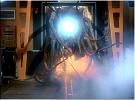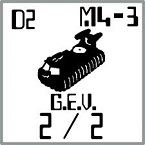herwin
Posts: 6059
Joined: 5/28/2004
From: Sunderland, UK
Status: offline

|
quote:
ORIGINAL: JWE
I suppose this is the relevant forum in which to pose your question. But both your premise and your expression are offensive.
The true test of the game is the environment in which it exists. And it does that very well.
So "Smoke You" and your continuous, pathetic, attempts to cast this game in your own, wierd, terms, and your irresponsible, irrelevant, repetitious, and technically incompetent, complaints. I, for one, am utterly sick of them. You have neither the knowledge, nor experience, to make reasonably informed posts on these matters. The posts you do make have become a bit of a laughingstock among them that have some facilty in this area.
So get off the high horse. It should be utterly obvious to any computer game literate 8 year old, that AE cannot do what you demand. Deal with it.
Since you have told us all just how superior you are and how much more you know about computer modeling and the military, I suggest you do what I did; make your own scenario and let the players decide.
This is the appropriate sub-forum in which to do that. So long as you have the wit to handle it.
I'm missing the point you're making.
What about treating a battlefield as a graph, with positions (vertices) and routes (edges)? Use the existing abstraction of the hex as seven sub-regions, each containing a position. The distance between a pair of positions is about the distance that a division can screen, so we might regard each vertex as a divisional position. A positional defence defends a position; a mobile defence defends an edge, and infiltration moves down an edge. The state of a hex is defined by who holds the seven positions and the distance advanced along each edge, which can probably be treated as an integer value. Advancing between two hex centres involves travelling along three edges, each with two intermediate positions between vertices. So an edge is 15 miles--a day's march in Western European terrain. Moving occupied position to position involves attacking with about a 30% chance of advancing. Mobile tactics involve being able to move two or three times as fast as infantry. Japanese infiltration tactics involves finding and advancing along lightly held edges, or even skipping between parallel edges. (Watch the paths!)
I think it can be calibrated yet it is hardly as complicated as modelling the hex as terrain. It's a bit similar to how I've seen an intel officer do a terrain analysis--he looked for routes and positions.
_____________________________
Harry Erwin "For a number to make sense in the game, someone has to calibrate it and program code. There are too many significant numbers that behave non-linearly to expect that. It's just a game. Enjoy it." herwin@btinternet.com |
 Printable Version
Printable Version








 New Messages
New Messages No New Messages
No New Messages Hot Topic w/ New Messages
Hot Topic w/ New Messages Hot Topic w/o New Messages
Hot Topic w/o New Messages Locked w/ New Messages
Locked w/ New Messages Locked w/o New Messages
Locked w/o New Messages Post New Thread
Post New Thread